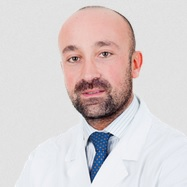New Frontiers of Advanced Imaging in Dentistry
A special issue of Journal of Imaging (ISSN 2313-433X). This special issue belongs to the section "Medical Imaging".
Deadline for manuscript submissions: closed (1 May 2022) | Viewed by 39844
Special Issue Editor
Interests: endodontics; restorative dentistry; oral surgery; dental implantology; prosthetics
Special Issues, Collections and Topics in MDPI journals
Special Issue Information
Dear Colleagues,
It is with great pleasure that I propose this Special Issue, entitled "New Frontiers of Advanced Imaging in Dentistry". The significant technological improvements of the equipment have made it possible to obtain significant results in recent years. X-ray imaging is becoming more comprehensive and with a smaller radiation dose. Treatment plans are increasingly oriented towards complete digital planning, and it would be important to have repeatable exams in short periods of time, for follow-up. In addition to the reduction in the dose of ionizing radiation, other tests, thanks to the technical evolution, are increasingly adapting in order to be used in dentistry, such as Magnetic Resonance Imaging (MRI) and Ultrasound. I expect to receive articles regarding conventional and 3D imaging, as well as on their technological development, magnetic resonance and ultrasound applied to every branch of dentistry. Original articles, case reports, and reviews in the field of imaging, which aim to enrich scientific knowledge and help not only clinicians but also researchers involved in the development of new dedicated software, diagnostic instruments, technological improvements are warmly welcome.
Prof. Dr. Luca Testarelli
Guest Editor
Manuscript Submission Information
Manuscripts should be submitted online at www.mdpi.com by registering and logging in to this website. Once you are registered, click here to go to the submission form. Manuscripts can be submitted until the deadline. All submissions that pass pre-check are peer-reviewed. Accepted papers will be published continuously in the journal (as soon as accepted) and will be listed together on the special issue website. Research articles, review articles as well as short communications are invited. For planned papers, a title and short abstract (about 100 words) can be sent to the Editorial Office for announcement on this website.
Submitted manuscripts should not have been published previously, nor be under consideration for publication elsewhere (except conference proceedings papers). All manuscripts are thoroughly refereed through a single-blind peer-review process. A guide for authors and other relevant information for submission of manuscripts is available on the Instructions for Authors page. Journal of Imaging is an international peer-reviewed open access monthly journal published by MDPI.
Please visit the Instructions for Authors page before submitting a manuscript. The Article Processing Charge (APC) for publication in this open access journal is 1800 CHF (Swiss Francs). Submitted papers should be well formatted and use good English. Authors may use MDPI's English editing service prior to publication or during author revisions.
Keywords
- 3D imaging
- cone beam computed tomography (CBCT)
- magnetic resonance imaging (MRI)
- dentistry imaging
- ultrasound
- endodontic
- implantology
- oral medicine and pathology
- dynamic navigation
- digital treatment plan






